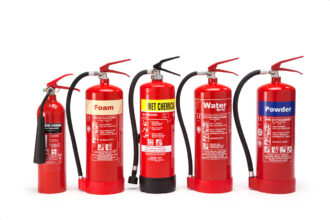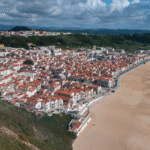Daniel Radcliffe did not spend the last twelve months collecting stamps in a passport like trophies. He moved in a tighter orbit, living between two cities that know him well: New York and London. The pattern felt deliberate rather than restless, a rhythm built from theatre, family, and the kind of everyday choices that let a famous person keep hold of an ordinary life. It was a year shaped by a celebrated stage run’s afterglow, the duties and joys of new fatherhood, and a preference for streets where a person can walk to dinner without turning each step into an event. The pace never slid into spectacle. It stayed human. Most days began with small rituals and ended with a seat in the dark, a bow, a shared drink, or—just as often—a quiet door closing on a flat that felt like home.
Daniel Radcliffe’s calendar did not feel like tourism. It felt like living split evenly between two worlds. Work, reputation, and an artistic community drew him towards Manhattan. Family, old friends, and a softer daily tempo pulled him back to London. The movement between them was not dramatic; it had the calm efficiency of someone who has done this before and learned which flights, streets, and venues treat a body kindly. He did not chase novelty. He chose continuity. In that choice sits the story of the year: a life that balanced applause with privacy, red carpet flashes with long walks, late theatres with late breakfasts, and a professional centre of gravity with a domestic one.
The frame is simple enough to sketch. Daniel Radcliffe won widespread recognition for his stage work and carried that momentum into the first half of this year. That momentum kept him in New York, close to the houses where he had performed and the peers whose new shows he wanted to see. It also meant choosing days that left room for being present at home—with Erin Darke, and with the quiet needs of a young family. Travel became a tool, not a personality. The map stayed short, the days stayed full, and the nights alternated between public and private with care.
A Year on the Move, A Life in Balance
The first thing to understand is how Daniel Radcliffe measures time. He thinks in evenings. That is the theatre habit. Whole days reorganise themselves around a curtain. Breakfast shifts, lunch drifts, dinner gets split—half before the overture, half after the applause. Sleep slides into the early hours, and the body adapts by turning coffee into punctuation marks. Over the last year, Radcliffe kept that structure even when he was not the person taking the bows. It gave his weeks a dependable spine: practical afternoons, purposefully light meals, a show, a late walk, and then the calm of a door that closes behind him.
He did not live those weeks in isolation. New fatherhood reshapes the clock again, and Radcliffe leant into that shift without fanfare. Theatres still mattered, but so did mornings that lasted long enough to read, to cook, to be present. The cities he chose allowed him to do both. New York, with its density of venues and rehearsal rooms, made it easy to support friends and keep a foot in the craft. London, with its gentler afternoons and neighbourhood scale, created space to be at home without a camera following him down the pavement.
Travel, then, was the quiet instrument that tuned his life rather than the show itself. Flights were taken because he needed a different desk and a different stage; hotels or short-let flats were booked because they gave him a familiar kitchen and a bed that obeyed. The year reads well because the parts fit. Daniel Radcliffe did not swing for scale. He built continuity.
The Two Cities That Held the Year
New York was the working anchor. The city suited Radcliffe’s current needs: proximity to theatres, easy corridors between rehearsal spaces, and a culture where actors slip from barstools to box offices without anyone making much fuss. He liked being in audiences as much as being on stage, and New York rewarded that instinct. You can watch a matinee in one house, grab a simple supper, and then sit down for an evening performance across the street. The gears mesh well when your life is built around a seven-day cycle of craft and recovery.
New York also gives Daniel Radcliffe a straightforward way to eat and move. Pre-show dinners tend to be deliberate and light: a plate of pasta that understands salt, grilled fish with greens, a bowl of ramen on a cold night. The point is not to perform a meal; it is to avoid feeling it during Act Two. After a show, the city’s late kitchens and quick slices are a safety net. Drinks are equally measured—a martini, a beer, a whisky, or nothing at all if the day wants honesty. Walking connects it all. Manhattan is still best understood at human speed, and Radcliffe kept to the pavements, headphones often slipped into a pocket rather than his ears so he could hear the street breathe.
London was the personal anchor. The pace is different by design. Afternoons start later, lunch can become the day’s social centre, and even the busiest week leaves room for a pot of tea that slows time back down. The West End keeps Daniel Radcliffe within reach of the same kind of theatre conversations he had in New York, but London tilts the balance toward home. A pub around the corner replaces a cocktail bar; a walk along a quieter street replaces the Broadway bustle. The city’s scale makes privacy easier: a short route through familiar lanes, a corner table where voices don’t have to compete, a quick shop for groceries without ceremony.
The contrast between the cities gave the year its shape. New York is a metronome set a notch higher—good for commitment, good for community, good for nights that end late but still feel earned. London releases the shoulders. It offers rooms that welcome early evenings, family time that is not scheduled, and a sense of heritage that takes the edge off ambition’s sharpness. Daniel Radcliffe did not try to make one city behave like the other. He let each be itself and used both well.
Days Built from Food, Drink, and Rest
Most travel writing reduces food to highlights and drink to lists. Daniel Radcliffe’s last year makes more sense when you notice how meals and glasses keep the day stable.
Food. He ate like someone who cares about how he will feel two hours later. In New York, that meant trattorias near the theatre district, small plates that didn’t compete with conversation, and late-night bowls that reward walking out of a show with an appetite. In London, it meant pub plates that still value craft—pie with a proper crust, fish cooked simply, chips that crackle—and small restaurants where bread earns its butter. Breakfast mattered most. It set the tone: eggs, toast, fruit, coffee, sometimes cereal if the morning felt domestic. Bakery runs, when he had the time, were a small pleasure. New York’s bagels and London’s buns hold their own comfort.
Drink. Coffee ran the day in Manhattan. Daniel Radcliffe used it to mark the morning and rescue the late afternoon. In London, tea re-entered the script, especially on grey days that begged for warmth. Alcohol lived in the margins rather than the centre—pints as bridges between friends, a cocktail before a show, a measured whisky to close a long evening. He is not the person who turns nights into obstacles. He keeps to rooms where you can hear your companion across the table and exit without fanfare.
Rest. Sleep is the decisive variable. Radcliffe treated it as non-negotiable, which meant choosing rooms that calmed themselves on command: blackout curtains, quiet lifts, reliable showers, thermostats that listened. Boutique hotels on side streets and rented flats with workable kitchens solved almost everything. Being able to fry an egg at 11 a.m. or warm soup after midnight gave his days a way to reset. He arranged his things the same way wherever he was—keys on a tray by the door, book on the bedside table, trainer laces tucked—because sameness is its own form of rest.
Small habits. Habits turned the cities liveable. Daniel Radcliffe kept a short list of cafés that never rushed him, a market where fruit tasted right, a shop that stocked the tea he liked, and a couple of parks with benches in the shade. He knew which cinema seats had decent sightlines and which theatres were worth showing up fifteen minutes earlier for because the queues run oddly long. He understood how far he could walk before a matinee and still arrive with a settled heart rate. These details do not look like travel logs. They are the true map of a life in motion.
Nights Out and Nights In
Nights tell you who a person is. Daniel Radcliffe’s nights were split, on purpose, between public rooms and private rooms, and the division kept the year upright.
Nights out followed a steady pattern. If a friend had an opening, he went. If a show drew good whispers, he found a seat. Pre-show dinners stayed light. He tended to choose restaurants within walking distance of the house, places where staff treat stars and civilians exactly the same. After the show, he often walked to a nearby bar for one round and good talk. The venues were chosen for conversation: low light without gloom, music that sat in the background, staff who knew when a table wanted privacy. New York provided a surfeit of those rooms, and London, in its own way, did too.
Nights in mattered just as much. Daniel Radcliffe did not try to live on applause alone. Staying home allowed him to cook simply, read scripts, answer messages from two time zones, and sleep properly. A night in gave him back the calories and quiet that the rest of the week spent. It also made space for Erin Darke and for fatherhood without spectators. The sound of a kettle, the ordinary business of tidying, the slow pleasure of washing up—these small acts suggested a life grounded in real things. They prepared him to be generous in public because he felt looked after in private.
The choice between going out and staying in had less to do with glamour than stamina. A week of theatre and social rooms can be a gift; two in a row can be tiring. Radcliffe chose the alternation smartly. He preserved his voice—literal and figurative—by not spending it every night. If you ran into him at a show on Tuesday, you might not see him again until the weekend because Wednesday belonged to home. Over the year, that pattern produced steadiness rather than spikes. The people around him felt it too—reliable presence at important moments, not constant noise.
Snapshots That Tell the Story
A spring night in Manhattan. Daniel Radcliffe and Erin Darke step out for a Broadway opening. The air carries the city’s bright hum. They have eaten early at a small place that knows how to send a plate out at the right temperature and right speed. They arrive at the theatre as doors open, not late. Inside, Radcliffe is just another person in the audience, attentive and still. The bows arrive, and he joins the applause like everyone else. Afterwards there is a short walk and a quiet bar. One round, talk that moves easily between the show and home life, then the short journey back through streets that are not interested in making a scene.
A rainy afternoon in London. The morning slips past without drama. Daniel Radcliffe keeps a booking for lunch, unhurried, with food that tastes like the kitchen cares: roasted vegetables, fish, good bread. The sky lifts towards grey-white, and he takes a walk through lanes where puddles pool at the edges. The West End matinee draws him in. He sits a few rows back, hands still for most of the performance. When the lights come up, he chooses a side exit and heads to a pub that keeps its noise at conversation level. A pint, a brief chat with a friend who works in the house, and an early evening home.
A travel day. A light bag, no grand fuss at the airport, boarding at the sensible moment rather than the first. Daniel Radcliffe reads for a while, rests for a while, lands without drama. The drive into the city is familiar. He knows which lane his driver prefers and which turn shaves ten minutes off at the wrong time of day. At the flat or hotel, he places his keys on the tray, opens a window for a minute to taste the air, and then goes out quickly: groceries, bread, fruit, milk, eggs. Back inside, he sets the kettle to boil and answers a few messages before anyone can ask whether he has arrived. A routine, and because it is a routine, a relief.
A night at home. No plans. Daniel Radcliffe cooks something that leaves the kitchen smelling like warmth—garlic, tomatoes, herbs; or ginger, soy, and steam. He eats at a table rather than over a sink. He tidies the worktop and stacks plates to dry. There is a script on the sofa, a novel on the armchair, messages pinging that can wait. He texts a friend across the ocean about a line that made him laugh. He sleeps when he wants to, not when the city asks him to. In the morning, the room gives itself back to him like a promise.
Each snapshot is unremarkable in the best way. None relies on stardom to make sense. All point towards a person who has decided to value continuity over novelty and to let two cities hold him well.
The Thread Running Through It All
Return to the beginning and the thread becomes obvious. Daniel Radcliffe’s travel was not about covering ground for the sake of it. It was about deepening his life in two places that reward attention rather than noise. Theatre was the constant that pulled him into public rooms with purpose. Food and drink formed the continuity that let days remain manageable and nights stay sociable without spiralling. Sleep, protected and planned, kept the rest of the choices upright. Family grounded everything: the reason to fly back, the reason to leave parties early, the reason to treat mornings like a precious resource rather than a runway to burn.
The story is richer because it resists spectacle. You learn as much from the way Daniel Radcliffe orders a plate before curtain as you do from a photograph on a red carpet. You learn from the way he chooses a seat—close enough to feel the room, far enough to keep the night from becoming about him. You learn from the way he picks routes that spare him a crowd and venues that honour talk. You learn from the way he keeps his time—deliberate, generous where it counts, private where it protects.
There is another detail worth noting. Routines are not dull when they are earned. Over the last year, Radcliffe refined a practical craft of living on the move. He kept a short list of places that made him feel steady. He paid attention to what foods landed well. He curated evenings so he could say yes to the next invitation with genuine interest. He travelled light. He spoke to friends in their time zones. He let applause be about the work and conversation be about the people. Those habits will carry him into whatever comes next because they are not tied to a single project or a single city. They are transferable.
If someone asked for a one-line map of the year, it would be this: Daniel Radcliffe moved between New York and London often enough to stay present in both, ate simply, drank modestly, slept carefully, showed up for theatre, and went home when it was time. That does not make for a flashy postcard. It does make for a life that holds. And in an industry always inclined to chase the largest stage, there is steadiness—and a kind of quiet courage—in choosing rooms where the table fits four, the sound is kind, and the chairs at the end of the day are just good, honest restaurant chairs.
The point is not that he avoided travel. The point is that he travelled well—by which I mean, he travelled in ways that protected the parts of his life he cares about most. New York gave him a professional community and a nightly pulse; London gave him family time and air. He took what each offered without forcing either to be something else. He let his year be ordinary where it could be and special only where it mattered. He treated the cities like partners rather than stages. He kept his centre.
As the next year builds, the habits will go on doing their quiet work. There will be more theatres, more dinners that arrive at the right moment, more afternoons where tea rescues a day that slumped, more early nights that make the next morning bright. Daniel Radcliffe’s map may widen again if new work calls. Or it may stay compact because the best parts of his life already live within a few subway stops or tube stations. Either way, the story remains the same: a person who knows what he values, moving through cities that let him live by those values, one well-chosen step at a time.

















